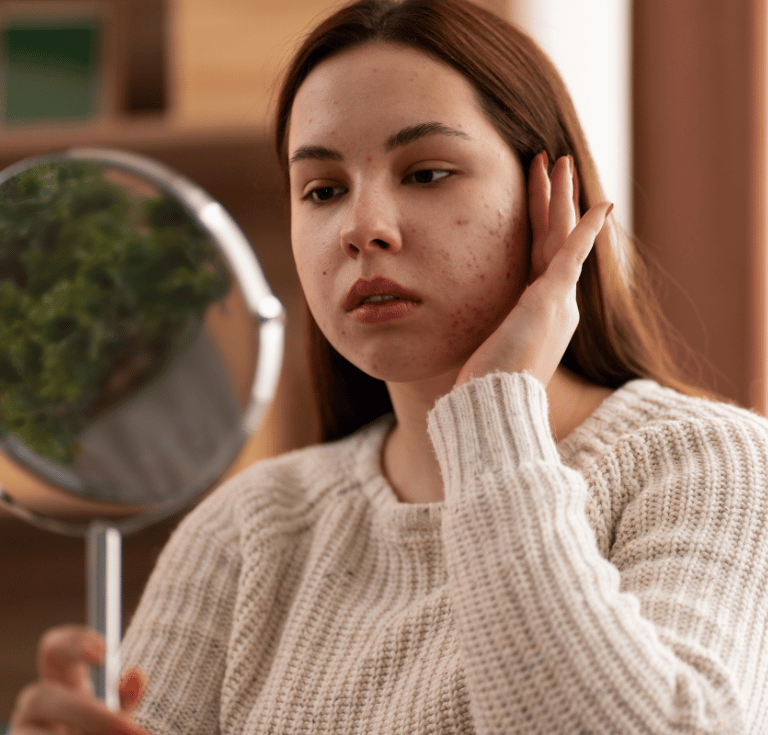As someone deeply involved in the “Diabetes Management for Women” niche, I’m here to discuss an extremely important health topic: the early signs of diabetes in women. Recognizing these signs early can make a significant difference in managing the condition effectively.
Diabetes in women can often go undetected, leading to significant health challenges. Early detection and management are crucial for a healthy life. This article will explore ten early signs of diabetes in women that should not be ignored.
10. Unusual Thirst and Frequent Urination

What to Look Out For
Imagine feeling a thirst that just won’t go away, no matter how much water you drink. This isn’t just about needing a few extra sips throughout the day; it’s a relentless, unquenchable thirst that persists. It’s often coupled with the need to urinate more frequently, especially noticeable at night. This isn’t just a minor inconvenience; it’s a significant shift in your body’s normal functioning.
Why It Happens
According to the American Diabetes Association, over 34.2 million Americans are living with diabetes, and many are women who initially may not pay much attention to symptoms like excessive thirst. The reason behind this is quite physiological. When your bloodstream has an excessive amount of glucose, your kidneys go into overdrive trying to filter and absorb it. If your kidneys can’t manage this overload, the excess sugar starts to be expelled through your urine. This process doesn’t just get rid of sugar; it also pulls fluids from your tissues, leading to dehydration. That’s why you feel that incessant thirst. It’s a critical sign that your body is struggling to maintain its delicate balance. For women, paying attention to these signals is vital, as they can often be the first indicators of underlying health issues.
9. Unexpected Weight Loss
The Surprising Symptom
Now, let’s talk about weight loss that happens unexpectedly. It’s not the gradual weight loss from dieting or stepping up your fitness routine; we’re discussing sudden weight reduction without any noticeable lifestyle changes. Initially, this might seem like a welcome surprise, but it’s actually a potential warning sign of diabetes.

A study highlighted by the Journal of the American Board of Family Medicine points out that about 40% of individuals diagnosed with Type 1 diabetes reported unexplained weight loss at the time of diagnosis. This statistic is particularly concerning for women, who often experience more complex hormonal fluctuations that can obscure or complicate a diabetes diagnosis.
The Diabetes Connection
So, why does this weight loss happen? When your body can’t effectively utilize glucose due to insulin-related issues, it starts looking for alternative energy sources. The body turns to burning fat and muscle for this needed energy, leading to weight loss. While shedding a few pounds might not seem alarming, a significant and unexplained drop in weight is a red flag. It’s a silent, yet urgent, call from your body for attention. Understanding how these symptoms uniquely present in women is crucial. Women’s bodies respond differently to diseases like diabetes, and recognizing these signs early can be key to managing and potentially reversing the condition.
8. Increased Hunger in Women

Understanding the Unrelenting Hunger
Imagine you’ve just finished a hearty meal, but your stomach doesn’t seem to get the memo. This isn’t a case of mild hunger; it’s a deep, persistent craving for more food, often a key indicator of diabetes. For women, this symptom can be particularly tricky to interpret.
Why It’s Deceptive
A study in ‘Diabetes Care’ reveals that women with diabetes often experience more acute fluctuations in blood sugar levels compared to men, significantly impacting their hunger levels. However, these fluctuations can be misleadingly attributed to hormonal changes, such as those occurring during menstrual cycles, leading to misinterpretation.
Identifying the Real Culprit
How do you distinguish between ordinary hunger and a symptom of diabetes? If you find your hunger is constant and insatiable, it’s a critical sign. This incessant hunger could be more than just a craving; it could be your body signaling an underlying issue with blood sugar regulation.
7. Fatigue and Weakness in Women
The Overwhelming Tiredness
We’re not talking about the usual fatigue after a long day; this is about a deep, persistent exhaustion that doesn’t go away with rest. It’s a significant symptom in women with diabetes, often overlooked or misattributed.

The Study’s Insights
Research from the University of Iowa underscores this point, showing that women with diabetes, particularly Type 2, are more likely to experience severe fatigue than men. About 40% of women with Type 2 diabetes report this symptom.
The Underlying Issue
This fatigue occurs because glucose remains unused in the bloodstream, depriving cells of essential energy. In women, however, this symptom is frequently attributed to lifestyle factors or stress, resulting in a dangerous delay in recognizing and treating diabetes.
Recognizing the Warning Sign
How do you know when fatigue is more than just being tired? If you feel continuously worn out despite getting enough rest, it’s a sign to pay closer attention. This level of fatigue could indicate that your body is struggling to manage blood sugar levels effectively.
6. Blurred Vision in Women

A Concerning Symptom
Picture a scenario where your vision shifts from clear to foggy without warning. This isn’t a simple case of needing an updated glasses prescription. It’s a symptom that’s particularly prevalent in women with diabetes.
Why It Happens
The National Eye Institute notes that diabetes-related vision complications are more common in women. Fluctuating blood sugar levels cause the lenses in your eyes to swell, leading to these temporary vision changes.
Gender-Specific Challenges
A study in the ‘Journal of Diabetes Research’ found that women with diabetes are 1.2 times more likely to experience vision problems than men with the condition. However, in women, these symptoms can be confounded with hormonal changes, making diagnosis more complex.
The Telltale Sign
So, what should you be on the lookout for? If you notice frequent, unexplained changes in your vision, it’s crucial to consider it a serious warning sign. These fluctuations could be a clear indication of high blood sugar levels needing medical attention.
5. Slow Healing of Wounds and Cuts
The Healing Dilemma
Have you ever noticed a minor cut or scrape that just doesn’t seem to heal as quickly as it used to? This isn’t a minor inconvenience; it’s a significant indicator of diabetes. When wounds linger longer than they should, it’s time to pay attention.

The Blood Sugar Factor
High blood sugar levels play a disruptive role in the body’s natural healing process. Research, including a study published in ‘Wound Repair and Regeneration,’ suggests that women with diabetes may experience up to a 50% reduction in wound healing efficiency. This is largely due to impaired blood flow and potential nerve damage caused by elevated glucose levels.
A Thought-Provoking Question
If high blood sugar is impeding the healing of external wounds, one must wonder about its impact on internal systems. The skin, as the largest organ, could be reflecting deeper issues within the body’s ability to manage and recover from injuries.
4. Tingling, Pain, or Numbness in Hands or Feet

The Uncomfortable Sensation
This symptom extends beyond the occasional sensation of a limb ‘falling asleep.’ It’s a more serious condition known as diabetic neuropathy. The National Institute of Diabetes and Digestive and Kidney Diseases reports that up to 50% of people with diabetes will eventually develop neuropathy.
Diabetic Neuropathy in Women
For women, the experience of neuropathy can often be more severe due to differences in nerve fiber density. Regular experiences of tingling, pain, or numbness in the extremities are not just uncomfortable; they are alarming signs of underlying issues. These symptoms can lead to more severe complications if not addressed promptly and should be taken seriously.
3. Skin Changes and Infections
The External Indicators
Building on the issue of slow wound healing, we see further implications for skin health in diabetic conditions. Women with diabetes often notice significant changes in their skin, such as dryness, itching, and the development of dark, velvety patches known as acanthosis nigricans, especially around the neck and armpits.

Diabetes and Your Skin
A study from the ‘American Journal of Clinical Dermatology’ highlights that women with diabetes are at an increased risk for various skin conditions, including infections. The elevated glucose levels disrupt the skin’s natural barrier and immune response, leading to these issues.
The Internal-External Connection
The visible changes in the skin are not just superficial; they can be indicative of how diabetes is affecting the body internally. Persistent skin changes or frequent infections are not just external symptoms; they are critical signs that the body might be struggling with more than surface-level wounds. It’s a clear indication to monitor and manage blood sugar levels diligently.
2. Yeast Infections

A Recurrent Issue
Yeast infections in women are not just occasional annoyances; they can be a recurring and persistent problem, especially in the context of diabetes. This goes beyond the occasional discomfort, representing a chronic issue that needs attention.
Why It’s More Common in Diabetics
The American Diabetes Association points out that elevated glucose levels in the body make it an ideal breeding ground for yeast. A study in the ‘Journal of Women’s Health’ found that women with diabetes are three times more likely to suffer from yeast infections compared to non-diabetic women. The excess sugar in the body promotes yeast growth, leading to these frequent infections.
The Underlying Health Connection
These infections are more than just a physical annoyance; they can be a significant indicator of underlying health issues, particularly diabetes. Frequent yeast infections should prompt women to examine their health more closely, with a specific focus on blood sugar levels. This symptom, often overlooked or misattributed to other causes, is a crucial sign pointing towards the need for diabetes screening and management.
1. Irregular Periods and PCOS
A Disrupted Cycle
At the top of our list is the crucial sign of irregular menstrual cycles and PCOS (Polycystic Ovary Syndrome), a condition that is particularly significant for women’s health. It’s not just about missing a period here and there; it’s about a complex interaction between reproductive health and blood sugar regulation.

The Hormonal Imbalance
The relationship between PCOS and diabetes is intricate. PCOS affects up to 10% of women of childbearing age and is closely linked to insulin resistance, a precursor to diabetes. The American Journal of Epidemiology reports that women with PCOS are at a fourfold higher risk of developing Type 2 diabetes.
The Vicious Cycle
This connection is not a simple cause-and-effect scenario. PCOS often leads to irregular menstrual cycles due to hormonal imbalances, which can affect insulin production and glucose metabolism. This creates a cyclical issue where PCOS can exacerbate the symptoms of diabetes, and uncontrolled blood sugar levels can further disrupt menstrual regularity.
The Significance of Menstrual Regularity
Irregular periods are often dismissed as minor issues. However, they should be seen as an important health indicator. For women experiencing inconsistent menstrual cycles or those diagnosed with PCOS, it’s essential to monitor blood sugar levels closely. This oversight is not just about reproductive health but is deeply connected to overall metabolic function and the risk of diabetes.
Key Takeaways and Next Steps
As we conclude our exploration of the early signs of diabetes in women, it’s essential to recognize the interconnectedness of these symptoms and their significance in indicating the presence of diabetes. From unusual thirst and frequent urination to the complexities of PCOS and irregular menstrual cycles, each sign sheds light on the body’s struggle to regulate blood sugar levels.
Awareness and early detection are crucial in managing diabetes effectively. Understanding these signs can lead to timely intervention, potentially mitigating the severity of diabetes-related complications. It’s not just about addressing individual symptoms; it’s about considering your overall health and well-being.
Watch Now: ’10 Early Signs of Diabetes in Women You Should Not Ignore’ – Stay Informed and Prioritize Your Health. Don’t Miss These Crucial Signs:
FAQs
1. Can these diabetes symptoms be mistaken for other health issues? Absolutely. Symptoms like fatigue, weight loss, and yeast infections can be attributed to various health conditions. That’s why it’s important to consult healthcare professionals for accurate diagnosis and treatment.
2. Are all women at equal risk for developing diabetes? Risk factors vary among individuals. Factors like genetics, lifestyle, and body weight play significant roles. However, certain symptoms, like those related to PCOS, can indicate a higher risk.
3. How often should women get screened for diabetes? The frequency of screening can depend on several factors, including age, family history, and presence of symptoms. Generally, annual check-ups are recommended, but more frequent screenings may be necessary for those at higher risk.
4. Can lifestyle changes prevent the progression of diabetes? Yes, lifestyle changes like a balanced diet, regular exercise, and maintaining a healthy weight can significantly impact blood sugar management and may prevent the progression of pre-diabetes to diabetes.
5. Is diabetes reversible or curable? While Type 1 diabetes is not curable, Type 2 diabetes can often be managed effectively through lifestyle changes and medication. In some cases, individuals can achieve remission, where blood glucose levels are normal without medication.
Remember, these signs and symptoms are your body’s way of signaling that something is amiss. Paying attention to these early warnings and seeking medical advice can make a substantial difference in managing diabetes and maintaining a healthy life. Regular health check-ups, staying informed, and leading a balanced lifestyle are key steps in this journey. Stay vigilant, stay informed, and most importantly, stay proactive about your health.





